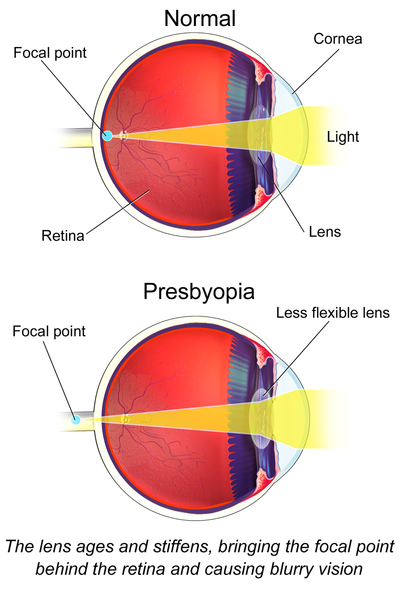PDF chapter test TRY NOW
Presbyopia:
The ciliary muscles weaken with age, and the eye-lens become rigid (inflexible), causing the eye to lose its ability to accommodate. As a result, an older adult is unable to see nearby objects. Therefore, it is known as 'Old age hypermetropia'.

Normal eye vs. Presbyopia eye
Some people have both myopia and hypermetropia, or a combination of the two. 'Bifocal lenses' can help with this. The upper part is made up of a concave lens (to correct myopia) for distance vision, and the lower part is made up of a convex lens (to correct hypermetropia) for reading.
Astigmatism:
In this condition, the eye cannot distinguish between parallel and horizontal lines. It can either be inherited or purchased. It is caused by the imperfect structure of the eye lens as a result of cataract formation on the lens, corneal ulceration, and injury to the refracting surfaces, among other things. Cylindrical lenses can be used to correct astigmatism.

Normal eye vs. Astigmatic eye
